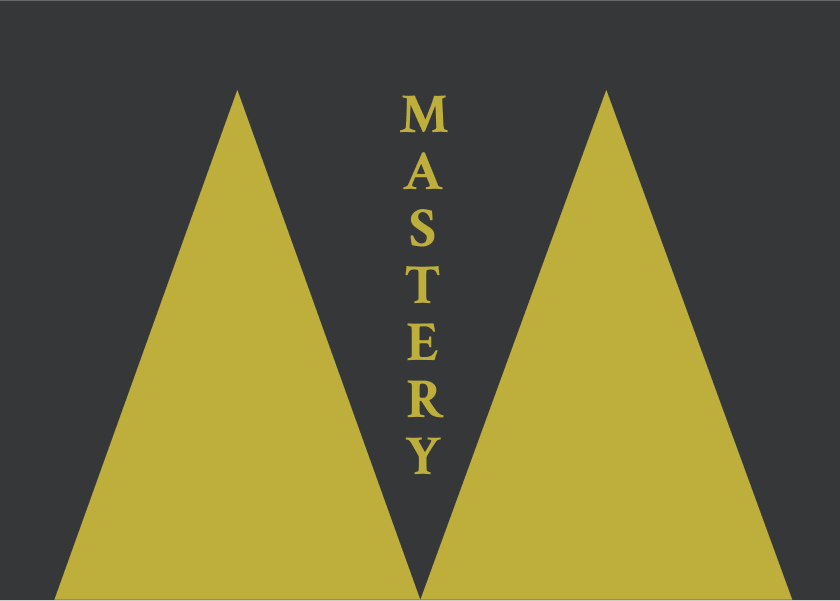The Six Pillars of Self-Esteem by Nathaniel Branden - Summary
Discover how to build and nurture your inner strength for greater well-being and success. This insightful work reveals the fundamental role of self-esteem in a fulfilling life. Discover how to build and nurture your inner strength for greater well-being and success. A must-read!

Building a Foundation for a Fulfilling Life
Are you sometimes plagued by self-doubt? Do you find yourself questioning your worth or abilities? In a world that often feels demanding and critical, maintaining a healthy sense of self-esteem can seem like an ongoing battle. Nathaniel Branden’s seminal work, The Six Pillars of Self-Esteem, offers a powerful and practical framework for understanding and cultivating this essential aspect of our psychological well-being. This book, penned by a renowned expert in the field of self-esteem, has resonated with countless readers seeking to build a stronger sense of self and lead more fulfilling lives. While delving into the complete text offers a comprehensive understanding, this summary provides a valuable overview of Branden's core principles and practical advice, potentially saving you time while offering immediately actionable insights.
Table of Contents
- About the Author
- Who Should Read This Book?
- Key Insights and Themes
- Detailed Summary
- Review
- Actionable Takeaways
- FAQs
- Conclusion
About the Author
Nathaniel Branden (1930-2014) was a Canadian-American psychotherapist and writer known for his work on the psychology of self-esteem. Considered a giant in the field of self-esteem, Branden authored numerous influential books, including "Honoring the Self," "The Disowned Self," and "How to Raise Your Self-Esteem." His work has been praised by leading figures in psychology and business for its clarity, depth, and profound insights into the nature and importance of self-esteem. Kenneth Blanchard, co-author of The One-Minute Manager, described The Six Pillars of Self-Esteem as "a must-read for everyone".
Who Should Read This Book?
The Six Pillars of Self-Esteem is a valuable resource for anyone seeking to understand and improve their sense of self-worth. This includes:
- Individuals struggling with low self-esteem: The book provides practical tools and principles to challenge negative self-beliefs and cultivate a more positive self-image.
- Those interested in personal growth and development: Understanding the foundations of self-esteem is crucial for achieving personal and professional goals. This book offers a roadmap for building inner strength and resilience.
- Parents and educators: The book explores how self-esteem develops and provides insights into nurturing healthy self-esteem in children and students.
- Therapists and counsellors: Branden’s framework offers a valuable theoretical and practical approach to addressing self-esteem issues in their clients.
- Leaders and managers: The book touches upon the connection between self-esteem and success in organisational settings, highlighting how fostering self-esteem can lead to improved individual and team performance.
Essentially, anyone who recognises the importance of a healthy self-concept for a fulfilling life will find profound wisdom and practical guidance within these pages.
Key Insights and Themes
Here are some of the key takeaways and main ideas explored in "The Six Pillars of Self-Esteem":
- Self-esteem is a fundamental human need: Branden argues that self-esteem is not a luxury but a basic requirement for psychological well-being and healthy development.
- Self-esteem has two interrelated components: Self-efficacy (confidence in one's ability to think and cope with life's challenges) and self-respect (a sense of being worthy of happiness, love, and respect) are the twin pillars of self-esteem.
- Self-esteem is an active process: It is not something passively received but actively generated through our thoughts, actions, and the practices we engage in.
- The six pillars are foundational practices: The book outlines six key practices that are essential for building and maintaining healthy self-esteem: living consciously, self-acceptance, self-responsibility, self-assertiveness, living purposefully, and personal integrity.
- Self-esteem influences all areas of life: Our level of self-esteem profoundly affects our relationships, career, creativity, emotional well-being, and overall sense of happiness.
- Low self-esteem can lead to self-destructive behaviours: The book explores how a lack of self-esteem can manifest in various negative patterns and choices.
- Healthy self-esteem is a source of resilience: It equips us to navigate challenges, learn from mistakes, and bounce back from setbacks.
Detailed Summary
The book is structured to first lay the groundwork for understanding self-esteem and then delve into the six core practices for its cultivation. Based on the provided table of contents and introductory excerpts, here's a more detailed look at the likely progression of ideas:
Part I: Self-Esteem: Basic Principles
- Self-Esteem: The Immune System of Consciousness: This section likely establishes the fundamental importance of self-esteem, portraying it as the psychological equivalent of the body's immune system. It suggests that self-esteem acts as a defence against psychological distress and promotes mental well-being. The author may argue that a healthy sense of self equips us to cope with life's adversities and thrive.
- The Meaning of Self-Esteem: This chapter would delve into a precise definition of self-esteem, likely elaborating on its two core components: self-efficacy and self-respect. It might clarify what self-esteem is and what it is not, distinguishing it from related concepts like arrogance or superficial confidence. Branden likely emphasises that genuine self-esteem is rooted in an authentic appraisal of oneself.
- The Face of Self-Esteem: This section probably explores the outward manifestations of self-esteem. It might describe how individuals with healthy self-esteem tend to behave, communicate, and approach the world, contrasting this with the behaviours associated with low self-esteem. Observable characteristics like assertiveness, resilience, and a sense of inner security might be discussed.
- The Illusion of Self-Esteem: This chapter likely addresses superficial or inauthentic forms of self-esteem. It might critique approaches that focus solely on external validation or positive affirmations without genuine inner work. Branden may argue for the importance of earned self-esteem based on authentic self-awareness and integrity.
Part II: Internal Sources of Self-Esteem
This core section of the book, spanning chapters 5 through 12, would explore the six internal practices or "pillars" upon which healthy self-esteem is built.
- The Practice of Living Consciously: This pillar likely emphasises the importance of active awareness of our thoughts, feelings, and actions. It would likely discuss paying attention to reality, being present in the moment, and engaging our minds fully in what we are doing. Practices for cultivating consciousness, such as mindfulness and self-reflection, might be explored.
- The Practice of Self-Acceptance: This pillar focuses on embracing ourselves fully, with our strengths and weaknesses, imperfections, and feelings. It likely involves acknowledging our reality without judgment and cultivating compassion towards ourselves. The chapter might address the detrimental effects of self-criticism and the importance of accepting our inherent worth.
- The Practice of Self-Responsibility: This pillar would explore the importance of taking ownership of our choices, actions, and their consequences. It likely discusses the empowering nature of accepting responsibility for our lives and avoiding blaming others or external circumstances. The connection between responsibility and personal agency would likely be highlighted.
- The Practice of Self-Assertiveness: This pillar focuses on honouring our wants, needs, and values and expressing them respectfully and appropriately. It would likely differentiate assertiveness from aggression and passivity, emphasising the importance of standing up for oneself and setting healthy boundaries. The link between self-assertiveness and self-respect would likely be explored.
- The Practice of Living Purposefully: This pillar likely emphasises the importance of identifying and pursuing meaningful goals and values. It would discuss how having a sense of purpose provides direction, motivation, and a foundation for self-efficacy. The chapter might explore different sources of purpose and how to cultivate a life aligned with one's values.
- The Practice of Personal Integrity: This pillar focuses on the importance of aligning our behaviour with our values and principles. It would likely discuss the detrimental impact of hypocrisy and the sense of self-betrayal that arises when we act against our conscience. The chapter would likely emphasise the link between integrity and self-respect.
- The Practice of Personal Integrity (continued): Given the length allocated in the contents, this chapter likely continues the exploration of personal integrity, perhaps delving deeper into specific aspects or providing further examples. It might discuss the challenges of maintaining integrity in a complex world and the rewards of living in alignment with one's values.
- The Philosophy of Self-Esteem: This chapter likely integrates the previous concepts and offers a broader philosophical perspective on self-esteem. It might explore the underlying beliefs and assumptions that support or undermine self-esteem and provide a unifying framework for the six pillars.
Part III: External Influences: Self and Others
This section, spanning chapters 13 through 17, would likely examine how external factors and relationships influence self-esteem.
- Nurturing a Child’s Self-Esteem: This chapter would focus on the principles of fostering healthy self-esteem in children, likely drawing connections to the six pillars and exploring the role of parents, caregivers, and the environment.
- Self-Esteem in the Schools: This chapter would likely examine the role of educational settings in shaping students' self-esteem, discussing how school environments and teaching practices can either support or hinder its development.
- Self-Esteem and Work: This chapter would explore the interplay between self-esteem and professional life, discussing how self-esteem affects job performance, career satisfaction, and workplace relationships.
- Self-Esteem and Psychotherapy: This chapter would likely address the role of psychotherapy in addressing self-esteem issues and how the principles outlined in the book can be applied in a therapeutic context.
- Self-Esteem and Culture: This chapter would likely examine the influence of cultural norms, values, and societal messages on individual self-esteem.
- Conclusion: The Seventh Pillar of Self-Esteem: This concluding chapter might offer a final synthesis of the book's key messages and potentially introduce a broader, integrating concept related to self-esteem.
Appendices: The appendices seem to include a critique of other definitions of self-esteem, sentence-completion exercises for building self-esteem, and recommendations for further study.
Review
Based on the praise from prominent figures in the excerpts, The Six Pillars of Self-Esteem appears to be a highly influential and valuable contribution to the field of self-esteem. It is described as "outstanding," "a masterpiece," "an invaluable contribution," and "clear, riveting, and profound". The book is recognised for providing pathways to actualising and celebrating our remarkable selves and for offering seminal work that describes the self-esteem connection between individual and organisational success. While these excerpts offer strong endorsements, a comprehensive review would require access to the full text to assess the depth of the arguments, the clarity of the explanations, and the effectiveness of the practical exercises suggested. However, the initial impression is that this book offers a significant and well-regarded framework for understanding and building self-esteem.
Actionable Takeaways
Here’s how to apply these lessons in real life:
- Practice Living Consciously: Dedicate a few moments each day to observe your thoughts and feelings without judgment. Pay attention to your actions and the reasons behind them. Ask yourself: "What am I thinking?", "What am I feeling?", "Why am I doing this?"
- Cultivate Self-Acceptance: Make a conscious effort to treat yourself with kindness and understanding, even when you make mistakes or fall short of your expectations. Acknowledge your imperfections as part of being human.
- Embrace Self-Responsibility: Identify areas in your life where you might be avoiding responsibility. Take ownership of your choices and actions, both positive and negative. Ask yourself: "What can I do to address this situation?"
- Develop Self-Assertiveness: Start by identifying situations where you typically suppress your needs or opinions. Practice expressing yourself honestly and respectfully, even when it feels challenging. Begin with small steps and gradually build your confidence.
- Explore Your Purpose: Reflect on what truly matters to you and what gives your life meaning. Set small, achievable goals aligned with your values and gradually work towards a more purposeful existence.
- Act with Integrity: Pay attention to your values and principles. Strive to align your actions with what you believe to be right, even when it is difficult. Notice how acting with integrity impacts your sense of self-respect.
FAQs
- What are the six pillars of self-esteem? The six pillars are living consciously, self-acceptance, self-responsibility, self-assertiveness, living purposefully, and personal integrity. These are the six fundamental practices that Nathaniel Branden posits as essential for building and maintaining healthy self-esteem.
- What is self-esteem according to Nathaniel Branden? According to the excerpts, self-esteem has two interrelated components: self-efficacy (confidence in one's ability to think and cope with life) and self-respect (a sense of being worthy). Branden views self-esteem as a fundamental human need and the immune system of consciousness.
- Is "The Six Pillars of Self-Esteem" worth reading? Based on the strong praise from various experts, including Kenneth Blanchard and Dr. Thomas Gordon, the book appears to be a highly valuable resource for understanding and improving self-esteem. It is considered a "must-read" and a "masterpiece" in the field.
Conclusion
Nathaniel Branden's The Six Pillars of Self-Esteem offers a profound and practical guide to building a robust sense of self-worth. Even through these excerpts, the emphasis on active practices and the interconnectedness of self-efficacy and self-respect shines through. By understanding and implementing the principles outlined in this influential work, readers can embark on a journey towards greater self-awareness, inner strength, and a more fulfilling life. We encourage you to delve into the full richness of The Six Pillars of Self-Esteem to gain a deeper understanding and integrate these powerful lessons into your daily life.
As an Amazon Associate, ShelfHelp may earn money from qualifying purchases. Needless to say, ShelfHelp only includes affiliate links to books we recommend and think are worth your time reading.




